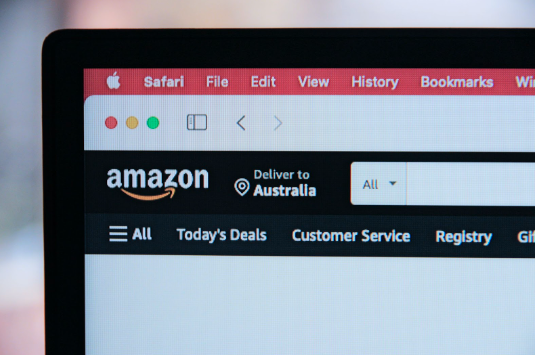Selling on Amazon can be a great way to increase your business’s profitability, but there are some costs associated with it that must be taken into consideration. These fees can often be confusing and hard to understand, so it’s important that potential sellers know what they’re getting into before launching their store. In this blog post, we’ll take a look at what Amazon’s seller fees will look like in 2023, as well as the different factors that go into these costs and how you can make sure your store is set up for success.
What Are Amazon Seller Fees?
As an Amazon seller, you will be responsible for a few different fees. First, there is the cost of goods sold (COGS), which is the cost of the products you sell on Amazon. This includes the cost of manufacturing, shipping, and any other associated costs. Next, there are Amazon seller fees. These are fees charged by Amazon for things like listing your products on their site and using their fulfillment services. Finally, there are payment processing fees. These are the fees charged by credit card companies and other payment processors for transactions made on Amazon.
The most important fee to consider as an Amazon seller is the COGS. This is because it will directly affect your bottom line. Make sure to factor in all costs associated with selling a product before listing it on Amazon. Once you have a good understanding of your COGS, you can then start to look at pricing your products competitively on Amazon.
Amazon seller fees can vary depending on which services you use. For example, if you use Fulfillment by Amazon (FBA), you will be charged additional fees for their storage and shipping services. However, many sellers find that these fees are offset by the increased sales they see from using FBA. Overall, you should carefully consider which Amazon services make sense for your business before signing up for anything.
Finally, there are payment processing fees to consider. These vary depending on which payment method you use, but they can add up quickly if you have a lot of transactions. Make sure to factor these fees into your pricing and budget accordingly.
What Kind of Fees Are Associated with Selling on Amazon?
When selling on Amazon, there are a few types of fees you will incur: Shipping fee, referral fees, variable closing fees, and fixed closing fees.
Shipping Fees

When you list a product for sale on Amazon, you will be charged a referral fee. This is a fee that is charged by Amazon for connecting the buyer and seller. The current referral fee for most products is 15% of the total sales price, but this can vary depending on the category of the product. Additionally, if you use Fulfillment by Amazon (FBA) to fulfill your orders, you will also be charged fees for the fulfillment, storage, and shipping.
Referral Fees
When you sell on Amazon, you may be charged a referral fee. This is a fee charged by Amazon for every item that is sold on their site. The referral fee is calculated as a percentage of the total sale price of the item, and it is paid to Amazon by the seller. The referral fee varies depending on the category of the item being sold, and it can range from 8% to 15%. There are some categories where it can be as low as 6% or as high as 45%. For example, the referral fee for a book is 15% while the referral fee for an electronic item is 8%.
However, Amazon also offers an optional fee structure called “Fulfillment by Amazon” (FBA). With this program, Amazon will store and ship your items for you. In exchange for this service, Amazon will charge you an additional fee that is based on the size and weight of the item. This FBA fee will be added to the referral fee when calculating the total cost of selling on Amazon.
Variable Closing Fees
When it comes to closing fees, there are a few things to keep in mind. First, Amazon will charge you a variable closing fee based on the total amount of the sale. This fee is typically around 2% but can be higher or lower depending on the category of goods sold. Additionally, if you’re using Fulfillment by Amazon (FBA), you’ll also be responsible for paying FBA fees, which vary depending on the size and weight of the item.
Monthly Subscription Fees
As an Amazon seller, you have the option to subscribe to one of three monthly plans: Individual, Professional, or Enterprise.
- Individual: $0/month + Referral Fees and other Selling Fees
- Professional: $39.99/month + Referral Fees and other Selling Fees
- Enterprise: Variable monthly subscription fee + Referral Fees and other Selling Fees
The Individual plan: It is best for low-volume sellers who want to dip their toes into Amazon selling. With this plan, you pay $0.99 per item sold plus other selling fees. In a month, an individual seller who sells 41 products will pay $40.59 (41 x $0.99).
The Professional plan: It is best for medium-volume sellers who want access to additional features, such as bulk listing tools and professional reports. Enterprise plans are customized according to business size and needs and are best for high-volume sellers. With this plan, you pay $39.99 per month plus other selling fees.
Enterprise: The enterprise plan is best for those who are looking to sell in high volumes and need access to special features and services not available with the other two plans. Contact Amazon for more information on the enterprise plan and pricing.
To see a full breakdown of all Amazon seller fees, visit this link: [insert URL].
Other Fees

In addition to the monthly subscription fee, there are also other fees that may be incurred when selling on Amazon. These include:
Listing fees: When you list a product for sale on Amazon, you will be charged a small fee. This fee is generally around $0.20 per item.
Rental book service fees: If you offer textbook rentals, expect to pay a rental book service fee of $5.00 for each rental.
High-volume listing fees: For active, non-media listings that haven’t sold in 12 months, we charge a monthly fee of $0.005 per eligible listing to cover cataloging costs. For the first 100,000 listings, this fee is waived.
Refund administration fee: The amount of the referral fee you paid for the item(s) will be refunded to you if you refund a customer for an order for which you have already received payment, minus the refund administration fee, which is the lesser of $5.00 or 20% of the referral fee. A refund administration fee of $0.30 will apply if you refund a customer $10.00 for an item in a category with a 15% referral fee ($10.00 x 15% referral fee = $1.50).
FBA inventory storage fees: When you use Amazon’s fulfillment services, you will be charged a fee for each item stored in their warehouses. This fee is generally around $0.48 per cubic foot per month.
Is There A Way To Minimize Amazon Seller Fees?
As an Amazon seller, you are responsible for the costs of shipping your products to Amazon fulfillment centers, as well as the cost of Amazon Seller Fees. There are a few ways to minimize these fees, which we will outline below.
Use Fulfillment by Amazon (FBA)
Fulfillment by Amazon (FBA) is a program that allows you to store your products in Amazon’s fulfillment centers and have them ship directly to customers. This can save you time and money on shipping costs. Additionally, Amazon offers a lower per-item fee for sellers who use FBA.
Utilize Automation Tools
Using automation tools can help streamline the process of managing your products on Amazon, thus reducing the amount of time spent on manual tasks and allowing you to focus more on growing your business. Automation tools can also help reduce costs associated with listing products, managing inventory, and fulfilling orders.
Offer Free Shipping
One way to offset the cost of shipping is to offer free shipping on your products. This can be done by including the cost of shipping in your product price or by offering free shipping as an incentive for customers to purchase from you.
Join an Amazon Seller Community
There are many online communities for Amazon sellers that can provide support and advice on how to minimize fees. These communities can also be a great way to find discounts on shipping and other resources that can help reduce your costs.
Partner with a 3PL who can reduce your storage costs
Amazon storage rates are extremely high and their new 2023 additional inventory surcharges squeeze margin out of sellers. Working with a 3PL warehousing provider can reduce your storage costs and help avoid the additional Amazon surcharges, by keeping large amounts of inventory out of Amazon, and forwarding inventory into Amazon on a regular replenishment cycle.
Conclusion
As an Amazon seller, you will be responsible for paying a number of fees to Amazon. These fees can range from the cost of shipping your products to Amazon, to listing fees and commissions on sales. While the costs of selling on Amazon may seem like a lot at first, keep in mind that the potential for profits is also high. With over 300 million active users, Amazon is one of the largest marketplaces in the world. If you can successfully sell on Amazon, you can likely generate a significant income. Before making a decision about whether or not to sell on Amazon, be sure to carefully consider all of the associated costs. This will help you determine if selling on Amazon is right for your business.










